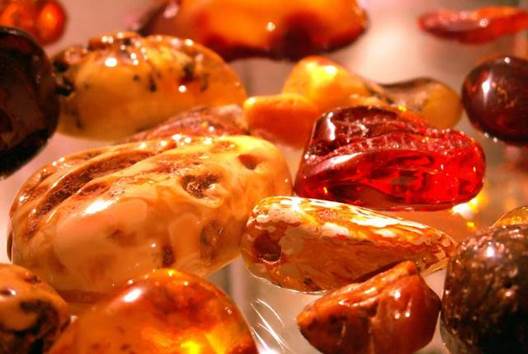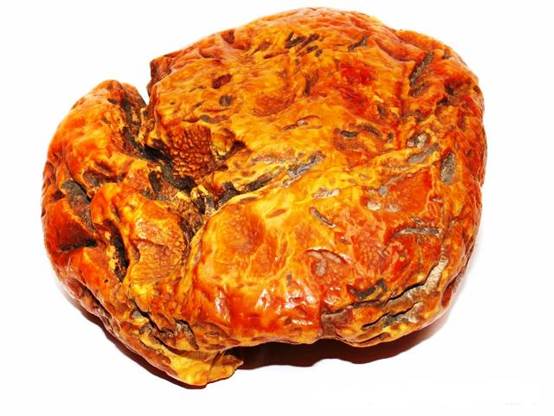In the hymn XVIII of the same poem while signing about the groom‘s courting of Penelope, it is said that Antinoy, aside other presents, gave her a majestic amber necklace as well. About amber being gifted is talked in hymn XV as well.
Amber is mentioned in the works of Tales from Miletus, Hesiod, Sophocles, Aristophanes, Ksenofontonus, Plato, Aristotle and other Greek wise men. In VII-VI B.C. Tales from Millet knew that amber gets electrified when rubbed and attracts small light objects.
Plato (427-347 B. C.) though of amber and magnet being of the same origin, because both of them attract objects. Sophocles (around 497- 406 B.C.) thought that amber was created from bird tears that cried over Meleagra.
Greek historian Herodotus (around 484-425 B.C.), later called by Cicero „the father of history“, wrote that he‘s doubting that the amber is brought from the Northern river Eridan as it‘s called by the Barbarians, as Eridan is a Greek word. „Though, – says Herodotus, – zinc and amber is brought to us from the further-most reaches of Europe. “.
Many knowledge about amber is presented by the antique writher and scientists Plinius The Older (Caius Plinius Secundus – 23-79 year) in his work „Historia naturalis“. In his book Plinius retells what was written about the formation of amber and its trade routes by thirty Greek and Roman authors before him (Piteas, Demostratus, Nikeas and others). Plinius the Younger (Caius Caecilius Secundus, around 62-114 year) also explained the creation, composition of amber, wrote about its sorts and trade. Both Pliniuses had no doubt that amber is tree resin and even pointed out the sort of pine tree out of which sap the amber was formed. By the way, Plinius the Younger sais that peasant Roman women living near river Po carried amber medallions not only as jewellery, but also as a cure from throat diseases.
Amber‘s use in medicine is known from the writings of Greek doctor and philosopher Claudius Galenus (around 130-200 year).
Roman philosopher and orator Dionus Chrisostomus (the Goldmouth) wrote that in the North there is a river which has as much amber as Rome has stones. Some current historians explain that Chrisostomus has the river Vysla or Nemunas in mind.
The name of Lithuanian ancestors was first mentioned by Roman writer Cornelius Tacitus (around 54-57 – around 120 year). In his I century work „Germania“he describes Aistians and amber:
„On the right side of the Sweb (Baltic) sea Aistian tribe is located with their customs and clothing similar to Sweb, but the language is closer to the British. They worship the Mother of Gods. As a sign of their belief they carry boar statues that also act as a weapon and protects from all the worshiper of the goddess, even in the midst of enemies. They use swords rarely, prefer bludgeons. Grain and other necessary plants they grow more heartily than the lazy Germans. They also search the sea: in the shallows and on the shores they‘re the only ones that collect amber, as they call it „glesum“. They don‘t know the properties of amber or its origins and being barbarians they never researched it and know nothing about it. Amber laid amongst other things thrown out of the sea till our luxury gave name to it. They don‘t use amber themselves: they collect the pieces, sell it crude and take remuneration in wonder. Though it‘s not hard to understand that it‘s wood resin, because often some insects or bugs stuck in the liquid are seen though, that stayed there when the liquid hardened. I would think, that the thick forests that contain leaking frankincense and balsam, exist not only in the secluded Eastern territories, but also in the Western islands and the liquid sap pressed out by soil and hot sun run to the closest sea and then is washed out on the opposite shore by strong storms. If you try out the qualities of amber by putting it closely to fire, it will burn like pine and will emit a greasy and redolent flame and will melt right away becoming resin and sap“.
A Roman senator and historian Cassiodorus that lived during VI century presents the text of a thank-you letter, written by king Theodoric to Aistians (between years 523 and 526) in which he thanks for the amber sent to the West.
„To the Aistians (Hestis) from King Theodoric. While your messengers were traveling there and back, we found out about your huge desire to meet with us, so, while living on the edges of the ocean, you would be connected with us by our thinking… While sincerely greeting you, we wish to acknowledge that with gratitude (we) received the amber that was sent through the custom collectors. That amber, as a very light material, is thrown out by the subsidence of the ocean waves to you, as said in your notice… So we decided to write to you in order to let you know, so you won‘t think that we don‘t know anything about this, what you believe of being your secret. So visit us more frequently by those ways that were opened by your love, because it‘s always worth to look for peace with rich kings that are tamed by small present and always give greater remuneration for this. We have also given some verbal instructions to your messengers, through whom we declare what we estimate to be pleasant.“
This is the last known writing that speaks of Baltic amber trade in the VI century and about the ways found by the Aistians to the gothic capital Ravenna (Italy).
During the middle ages scientists didn‘t take much interest in amber. Middle Eastern scientist Razi (864-925) is worth mentioning and Tadjik scientist Ibn-Sinas (980-1037) also known as Avicenna that wrote about the healing qualities of amber.
Scientists of the Middle Ages didn‘t know the correct conclusions made Greeks and Romans about the origin and composition of amber made their own conclusions and were usually wrong.
For example, Agricola (1494-1555) denied the vegetal origin of amber. He saw amber as created by the liquid bituminous materials from deep in the earth that hardened while in open air.
Professor of medicine in the University of Konigsberg A. Aurifaber (1514-1559) who wrote the firs monograph on amber also thought it to be bitumen or mountain wax that seeped to the depths of earth into the sea where it hardened. In a monograph that appeared in Konigsberg in 1551 A. Aurifaber summarized and partially looked critically to the earlier author‘s works and knowledge about the qualities of amber, ways of extracting, its processing and use.
The first work about Prussian amber industry was written by P. J. Hartman. It‘s a book printed in Frankfurt in 1677 called „Succini Prussici Physika et Civilis Historia“.
 EN
EN LT
LT






